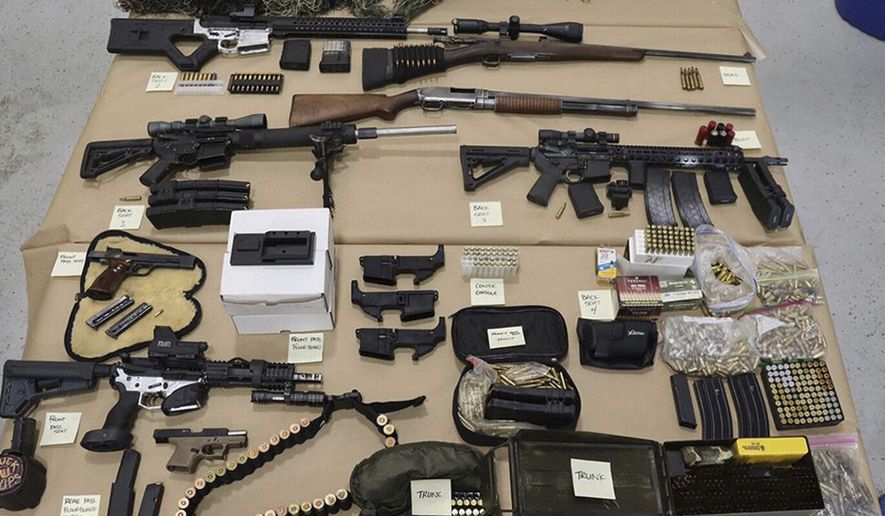Last year was the deadliest for incidents of domestic extremism in 25 years — and White supremacists were responsible for the vast majority of people killed in them, Homeland Security said Tuesday in a new threat assessment.
The long-awaited report labeled White supremacists “the most persistent and lethal” domestic threat to the country — though acting Secretary Chad F. Wolf also warned of an “alarming” rise of violent protests trading on anti-authority messages.
For more traditional threats, Mr. Wolf labeled Russia the “primary” enemy when it comes to injecting disinformation into the election — though he said Moscow’s aim is less about selecting a candidate and more about weakening the U.S.
And he said that when it comes to cyberattacks, Russia is a most capable enemy, China is rising, and Iran and North Korea are also looking to flex their muscles.
The threat assessment, the first of its kind for the department, had been highly anticipated, not because it breaks new ground but because of what it acknowledges.
Democrats for weeks had accused Mr. Wolf of delaying the assessment in order to try to water down the conclusions on White supremacists. Instead, Tuesday’s report contains stern language signaling the Trump administration acknowledges the violence of White supremacists and other racist extremists.
“I am particularly concerned about white supremacist violent extremists who have been exceptionally lethal in their abhorrent, targeted attacks in recent years,” Mr. Wolf said in his introduction to the report.
Democrats on Capitol Hill have been pushing for that kind of evaluation of White supremacists for several years, arguing that the Trump administration had been downplaying the dangers of racist extremists while overselling the dangers of radical Islamic or foreign-born terrorists.
The assessment handles the comparison carefully, saying that of terrorist threats inside the U.S., lone-wolf or small-cell attacks are the “primary” danger, split between Domestic Violent Extremists, or DVEs, and Homegrown Violent Extremists, or HVEs.
And among the DVEs, White supremacists are the biggest danger right now.
In 2019, the latest data available, White supremacists were responsible for eight attacks and 39 deaths. Other DVEs also accounted for eight attacks, but just nine deaths. HVEs, meanwhile, perpetrated five attacks and killed one person last year.
Among the more traditional homeland security challenges, the assessment said foreign-based terrorist organizations will saber-rattle over attacking the U.S., but “probably will remain constrained in their ability to direct such plots.”
Iran, though, will continue to flex its own ties to terrorist organizations as a retaliatory threat against the U.S.
Smuggling cartels will continue to feed Americans’ drug use and to provide a path for immigrants to breach the border illegally.
The fracturing of the existing cartels will “almost certainly” cause a spike in violence on the U.S.-Mexico border, the assessment concluded, and U.S.-based gangs, fighting for their own share of the drug market here, may grow more violent, too.
In terms of election meddling, the assessment said disinformation remains and attempts to influence voters are still the big threat, though Homeland Security did warn that hackers are “likely” to try to penetrate elections infrastructure itself.
“Adversaries could attempt a range of election interference activities, including efforts to target voter registration systems; to compromise election system supply chains; to exploit poor cybersecurity practices on protected election systems or networks; or to hack official election websites or social media accounts,” Homeland Security said.
As recently as late September, the FBI’s director had said those election system penetration attempts, which were reported in 2016, haven’t been apparent so far this year.
The threat assessment also warned that the census is a target for hackers, and security experts have spotted “vulnerability scans” and attempts to gain access to the system.
The most surprising assessment in Tuesday’s report was Mr. Wolf’s warning of “anti-authority and anarchist” forces working on the edges of lawful protests.
“We are still in the nascent stages of understanding the threat this situation poses to Americans, the homeland, and the American way of life,” Mr. Wolf said.
• Stephen Dinan can be reached at sdinan@washingtontimes.com.
• Bill Gertz can be reached at bgertz@washingtontimes.com.




Please read our comment policy before commenting.